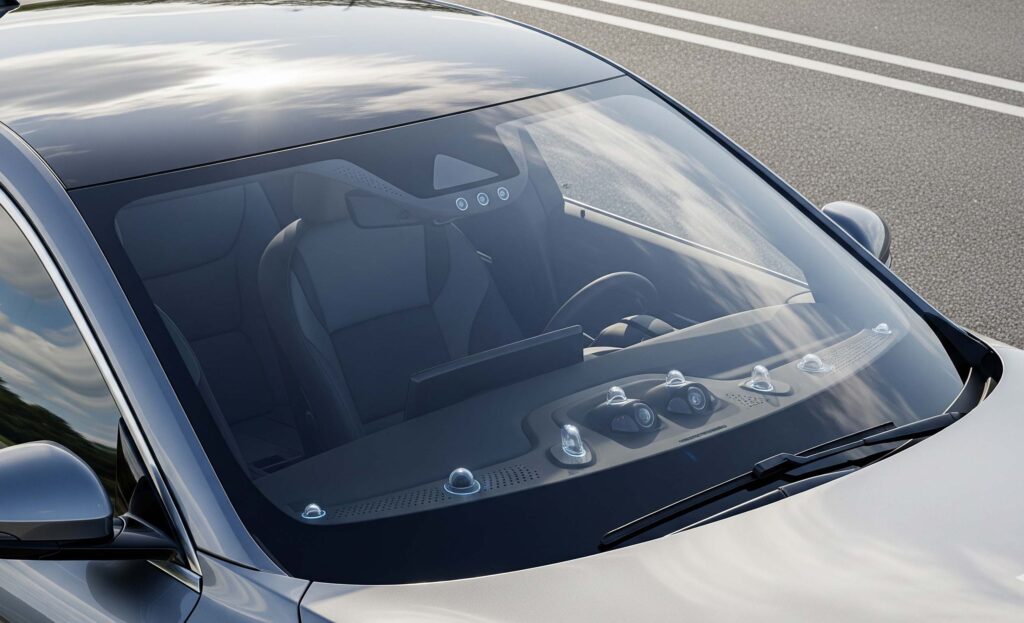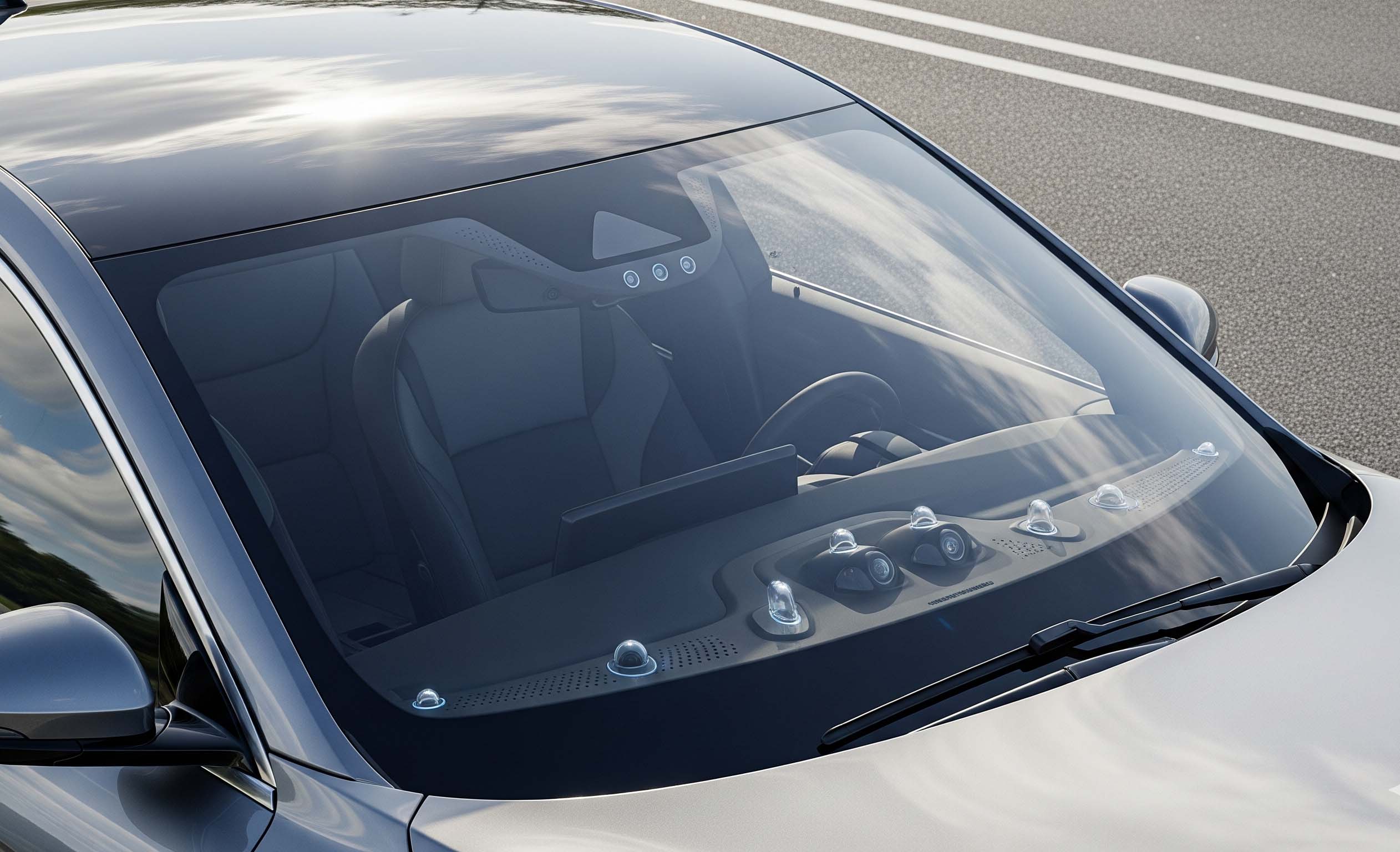Modern vehicles are smarter and safer than ever before, thanks to the rise of Advanced Driver Assistance Systems (ADAS). Features such as lane departure warning, automatic emergency braking, adaptive cruise control, and traffic sign recognition all rely on a network of cameras and sensors — many of which are mounted directly on or behind the windshield. While these technologies improve road safety and driver convenience, they also change the way we think about windshield repair and replacement.
If your car is equipped with these systems, here’s what you need to know about how windshield cameras and sensors work, why calibration matters, and what to expect when it comes to costs.
The Role of Windshield Cameras and Sensors in ADAS
Windshield-mounted cameras and sensors serve as the “eyes” of a vehicle’s ADAS. Depending on the make and model, they may include:
- Forward-facing cameras: Positioned near the rearview mirror, they monitor lane markings, traffic signs, pedestrians, and vehicles ahead.
- Radar or LiDAR sensors: Often placed behind the windshield to support adaptive cruise control and collision avoidance.
- Rain/light sensors: Mounted on the glass to automatically adjust wiper speed or headlights.
These sensors must have an unobstructed and precise view of the road to function correctly. Even a small misalignment, distortion, or imperfection in the windshield glass can reduce system accuracy — and potentially compromise safety.
How the Windshield Affects Camera and Sensor Performance
Unlike older cars where the windshield’s primary role was physical protection, today’s windshields serve as an optical lens for ADAS technology. Key factors include:
- Glass clarity: High optical quality ensures cameras capture an accurate image without distortion.
- Angle and position: A windshield’s curvature and mounting position directly affect how sensors perceive the road.
- Adhesives and installation: Even a millimeter of misalignment during replacement can throw off ADAS calibration.
- Heating elements or tints: Features like defrosting grids or UV coatings can interfere with camera visibility if not properly engineered.
In short, your windshield is no longer just a barrier — it’s an integral part of your vehicle’s safety system.
Why Calibration Is Essential After Windshield Replacement
Whenever a windshield with ADAS features is replaced, the cameras and sensors attached to it must be recalibrated. This process ensures that the systems “see” the road correctly and respond as designed.
There are two main types of recalibration:
- Static Calibration
- Done in a specialized workshop with calibration targets placed at precise distances and angles.
- The vehicle remains stationary while technicians adjust the system to match factory specifications.
- Done in a specialized workshop with calibration targets placed at precise distances and angles.
- Dynamic Calibration
- Performed on the road while the car is driven at specific speeds under controlled conditions.
- The system self-calibrates by recognizing lane lines, signs, and other markers.
- Performed on the road while the car is driven at specific speeds under controlled conditions.
Some vehicles require both methods, depending on manufacturer guidelines. Skipping calibration can lead to false alerts, poor system performance, or complete failure of safety features.
Cost Expectations for Windshield Sensors and Calibration
Replacing a windshield on an ADAS-equipped car is more complex — and more expensive — than it used to be. Here’s what you might expect:
- Windshield replacement: $300–$900 for standard vehicles, but luxury or specialty models may exceed $1,500.
- ADAS recalibration: $150–$500 depending on whether static, dynamic, or both are required.
- Total cost: Often ranges between $600 and $2,000 when factoring in both the glass and recalibration.
Insurance coverage varies by provider and state. In some areas (like Arizona), policies may fully cover windshield replacement with zero deductible, but recalibration costs may not always be included. Always check with your insurer and glass repair shop before moving forward.
Key Takeaways
- Windshield cameras and sensors are critical to ADAS safety features like lane-keeping assist and emergency braking.
- Modern windshields are designed with precise optical properties — making quality and correct installation essential.
- Recalibration after windshield replacement is non-negotiable to ensure safety systems function properly.
- Costs can be significant, but insurance may cover part or all of the expense.
When choosing a shop, look for one with ADAS recalibration capabilities, certified technicians, and strong customer reviews. This ensures not just a new piece of glass, but also the continued reliability of your car’s advanced safety systems.
Compare Local Shops with Our Free Quote Tool
Because ADAS-equipped windshields are more complex, it’s important to find a shop that not only replaces the glass but also handles recalibration correctly. Prices can vary widely between providers, and not every shop is equipped to service vehicles with advanced cameras and sensors.
That’s where our free quote tool comes in. In just a few clicks, you can:
- Compare prices from up to three trusted shops near you
- Save time by booking with a shop that fits your budget and schedule
Using the tool ensures you don’t overpay and that your vehicle’s windshield is in the best condition possible.
Get your free windshield replacement quote Today!
Bottom line: If your car has windshield cameras or sensors, replacing your glass isn’t a routine job anymore. It’s a precise, safety-critical process that requires expert handling.

To read more, visit blog.glass.net

